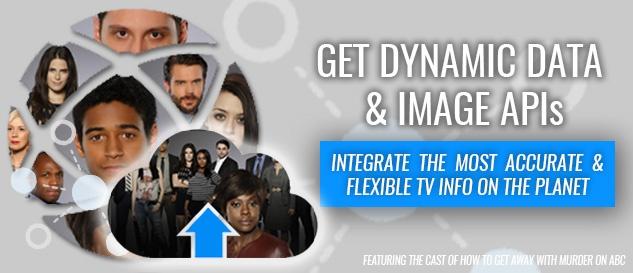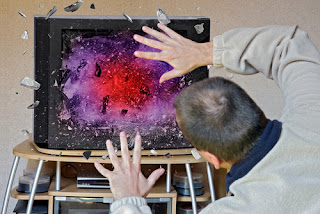Earlier this week, POLITICO co-founder Jim VandeHei wrote an
editorial
suggesting that the ongoing television revolution will result in on-demand
video conquering pay-TV. VandeHei insists that video content created by digital
media companies will soon takeover traditional television.
According to VandeHei, here’s what consumers should look
forward to in the coming years:
“State and local newspapers and TV? Gone. Their models are fatally flawed … Traditional TV and cable? Shrinking and scrambling.
…
At the same time, the need for content, especially (but not only) video content, will explode. It will be a mad rush that makes the 1980s’ race to create new cable channels seems like a leisurely stroll.
…
In all likelihood, the revolutions in video and digital will merge into one: with a new generation of media companies producing content we watch at home, listen to in our car and read wherever on the go.
Just like the Web destroyed the newspaper world; mobile will destroy the desktop world and on-demand video will destroy the TV and cable world.”
He goes on to cite businesses like Facebook and BuzzFeed, as well as Amazon and Snapchat as major forces in this race.
Netflix receives a mention too, and it’s worth noting that in 2015, Netflix produced more original programming than premium cable network HBO (450 hours vs. 401).
Seemingly, VICE and Periscope were forgotten, but they’ll likely play a role.
VandeHei namedrops a few more digital firms, and it’s worth exploring what they’ve done in the recent months.
In January last year, Jonathan Hunt, Vox Media global vice president of marketing and partnerships, recognized the potential value of Facebook Vide.
“The great thing about Facebook leaning in to the new video strategy is that publishers on average are seeing a lot more views and a lot more engagement with that video content,” Hunt told Digiday.
“State and local newspapers and TV? Gone. Their models are fatally flawed … Traditional TV and cable? Shrinking and scrambling.
…
At the same time, the need for content, especially (but not only) video content, will explode. It will be a mad rush that makes the 1980s’ race to create new cable channels seems like a leisurely stroll.
…
In all likelihood, the revolutions in video and digital will merge into one: with a new generation of media companies producing content we watch at home, listen to in our car and read wherever on the go.
Just like the Web destroyed the newspaper world; mobile will destroy the desktop world and on-demand video will destroy the TV and cable world.”
He goes on to cite businesses like Facebook and BuzzFeed, as well as Amazon and Snapchat as major forces in this race.
Netflix receives a mention too, and it’s worth noting that in 2015, Netflix produced more original programming than premium cable network HBO (450 hours vs. 401).
Seemingly, VICE and Periscope were forgotten, but they’ll likely play a role.
VandeHei namedrops a few more digital firms, and it’s worth exploring what they’ve done in the recent months.
Vox Media
In January last year, Jonathan Hunt, Vox Media global vice president of marketing and partnerships, recognized the potential value of Facebook Vide.
“The great thing about Facebook leaning in to the new video strategy is that publishers on average are seeing a lot more views and a lot more engagement with that video content,” Hunt told Digiday.
“This could theoretically be a pretty massive revenue stream with
publishers when and if they do enable monetization around this inventory.”
The following month, one of its properties had launched an original web series and announced several more.
Then summer arrived, and NBCUniversal made a $200 million investment in the company.
“Vox Media has a great portfolio of premium digital brands that deeply engage broad audiences,” said Steve Burke, chief executive of NBCUniversal.
By the time November 2015 rolled around, Vox revealed that it was hiring Matthew Vree, a co-founder of PBS Digital Studios, as executive producer of video.
It’s clear that video content is the focus here.
In May 2015, president of Business Insider Julie Hansen described Facebook video as “very appealing” in an AdExchanger interview.
The following month, one of its properties had launched an original web series and announced several more.
Then summer arrived, and NBCUniversal made a $200 million investment in the company.
“Vox Media has a great portfolio of premium digital brands that deeply engage broad audiences,” said Steve Burke, chief executive of NBCUniversal.
By the time November 2015 rolled around, Vox revealed that it was hiring Matthew Vree, a co-founder of PBS Digital Studios, as executive producer of video.
It’s clear that video content is the focus here.
Business Insider
In May 2015, president of Business Insider Julie Hansen described Facebook video as “very appealing” in an AdExchanger interview.
“We like to go where our users are and generally speaking,
there are monetization opportunities that follow,” Hansen said.
Later in the year, the company greatly expanded its video team. In 2013, it consisted of five employees. It’s now around 45.
“There is no special sauce,” said Justin Maiman, BI executive editor for video, discussing the group’s strategy. “It’s just storytelling.”
Later in the year, the company greatly expanded its video team. In 2013, it consisted of five employees. It’s now around 45.
“There is no special sauce,” said Justin Maiman, BI executive editor for video, discussing the group’s strategy. “It’s just storytelling.”
Just last month, BI scored over a billion video views on
Facebook.
“We try to customize the content for the audience,” said Hansen. “There is no quota system; it’s all about the right content finding the right audience.”
“We try to customize the content for the audience,” said Hansen. “There is no quota system; it’s all about the right content finding the right audience.”
Its most trafficked content, with over 65 million hits, is a
clip about a Brooklyn shop that makes rainbow bagels.
Upworthy
At the beginning of 2015, Upworthy hired Amy O’Leary from
the New York Times as its new editorial director. This was the company’s first
shift towards more video-centric content, with an emphasis on storytelling.
"You watch [the videos] and you feel something — and they're positive," said cofounder Eli Pariser. "They're not tearing people down, they're not preying on people's insecurities, they're talking about the good things that are happening in the world."
In October that year, Croi McNamara, the Head of Design & Media at Thomson Reuters, joined the team as the new Vice President & General Manager.
"In the world of viral video content, it's much more
valuable to get a small group of a million people really buzzing about it and
sharing it with their community, rather than 20 million people who are lukewarm
about something," McNamara told Poynter.
This past January, Upworthy laid off 16 employees in a
continuance of the video approach.
“Video is now the core growth driver at Upworthy. In fact, every dollar we’re shifting today will go to growing our video business in 2016,” an internal memo outlined.
“Video is now the core growth driver at Upworthy. In fact, every dollar we’re shifting today will go to growing our video business in 2016,” an internal memo outlined.
Under McNamara and O’Leary, the site has achieved over 200
million monthly video views.
“A lot of publishers try be everything to everyone,” O’Leary
said.
“We’re really good at staying focused on our mission and telling the kinds of
stories that we can uniquely tell.”
Currently, cable and pay-TV is more profitable than these digital outlets. But they’re certainly gaining ground. Who will ultimately be the victor here?
Author: Brian Cameron
Currently, cable and pay-TV is more profitable than these digital outlets. But they’re certainly gaining ground. Who will ultimately be the victor here?
Author: Brian Cameron
Image via Shutterstock.
Follow @FYITV








Post a Comment